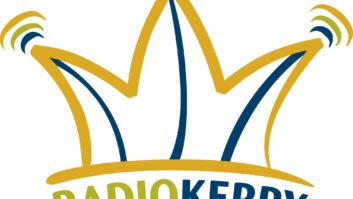We Try Out the FM Navigator 100 Signal Measurement System
Since the earliest days of broadcasting, broadcasters have sought means of measuring their signals. Some measurements are needed to evaluate the performance of a particular antenna or antenna system, while others may serve to define a coverage area or determine the signal strength at particular locations within a station’s coverage area.
Whatever the case, the basic need is for an accurate, easy, repeatable means of signal measurement.
A better way for FM
AM signal measurements have long been relatively straightforward and used a calibrated tuned RF voltmeter with a shielded loop antenna.
FM measurements, on the other hand, have been more of a challenge. The FCC-prescribed method of using a 9-meter mast, a tuned horizontal dipole and a 30-meter measurement run at each point is clunky at best and downright dangerous at worst.
Product CapsuleThumbs Up
Provides real-world signal measurements
Hands-free measurement campaigns
Measures multiple parameters
Thumbs Down
Poor, hard-to-follow documentation
Map software poorly documented
Software provided on floppies
Price: $5,990
Contact: the company in Florida at (305) 692-7555 or visit www.audemat-aztec.com
In addition, what do such measurements really tell you, other than what the average field intensity is at each measurement location 9 meters in the air? They sure don’t tell you what the average listener’s antenna will see just a few feet above ground level.
Audemat-Aztec, a company headquartered in Strasbourg, France, and with a new U.S. subsidiary in Aventura, Fla., saw the need to provide real-world “rubber-meets-the-road” FM field strength data that stations can use to highlight their competitive situation, contrast their facilities against competitors and monitor site effectiveness.
In its FM Navigator 100 system, Audemat-Aztec combined a complete FM broadcast receiver package that includes RF signal strength, FM stereo, RDS and DARC measurement capability along with GPS position fixing.
The FM Navigator 100 hardware is contained in a rugged anodized aluminum modem case that weighs in at about 2.5 lbs. It has external connections for FM antenna, GPS antenna, RS-232, headphones and multiplex. A Flash memory card slot is provided in the back for storing measurement campaign data, a far cry from the strip chart recorders of old. The unit comes with a handy foam-lined carrying case that is airline-transportable.
The FM Navigator 100 front panel is simple, containing an alphanumeric LED, selector wheel, two pushbuttons for programming and three status LEDs for stereo, RDS and DARC data.
The FM Navigator 100 is operated using a multi-layer menu system controlled by the selector wheel and pushbuttons. Anyone familiar with the Burk ARC-16 and its menu system will have no trouble negotiating the FM Navigator menus. The user can program 50 presets into memory for quick recall by channel.
A modem-type speaker is provided, but the quality was so poor that I found it to be of little value. A headset jack is provided as well, but volume adjustment is made through the menu system, making quick adjustment of volume level difficult.
Once a station has been tuned in, the user can dial up a wealth of information about the signal, including RF level in dBuV, peak multiplex deviation, multiplex signal power, multiplex overshoot, left and right audio levels, L+R and L-R audio levels, pilot deviation, subcarrier deviation (57 and 76 kHz), and complete RDS data. In the early part of our trials, we used the FM Navigator at several transmitter sites to confirm modulation and subcarrier injection levels. The accuracy was good, but we had to adjust our thinking from percent modulation to kHz deviation to make use of the data.
Measurement campaign
The FM Navigator’s strongest suit, however, is in mobile signal measurements. A measurement campaign consists of a series of automatic measurements made along a planned route. GPS position data is stored to the Flash memory along with signal level and other parameters.
(click thumbnail)The FM Navigator is shown set up for a measurement campaign in the author’s vehicle.
Campaign parameters are stored before hitting the road. The type of campaign, slow or fast, is selected. A fast campaign samples each station for 300 to 2000 ms and records 10 parameters from each measurement. A slow one samples each station for five minutes and records a number of additional parameters.
The scan mode ¾ none, FM, RDS or PGM ¾ then is selected. No scan means the unit stays on a fixed frequency. An FM scan seeks out the next FM station in the band at the end of each measurement. This would be useful for comparing the signal levels of all the stations in a market. An RDS scan is the same as an FM scan but only stops on stations transmitting valid RDS data. A PGM scan sequentially analyzes all the frequencies stored in memory.
Finally, a name is selected and stored for the campaign. The Flash memory holds a good bit of data, and the amount of memory used can be viewed from the campaign menu. The user can also clear the Flash memory from the menu.
With the campaign parameters programmed, the user is ready to attach the magnetic-mount FM and GPS antennas to the roof of the vehicle and hit the road. At the start point, a quick double-press of the enter button starts the recording.
Just drive
There is nothing else for the user to do for the rest of the campaign but drive. The FM Navigator emits a soft beep as each measurement is made, letting the user know it is working. The display shows the frequency and RF signal strength of each measurement. At the end of the campaign, a long press of the enter button stops the recording.
(click thumbnail)A screen shot of the FM Explorer application displays several modulation parameters including RDS data.
Along with the FM Navigator comes the FM Explorer software. This Windows-based application allows the user to connect a computer to the FM Navigator and retrieve campaign data. It also allows comprehensive real-time signal analysis, including a bar-graph type simultaneous mod monitor display of pertinent data. Comprehensive RDS and DARC analysis are provided through the FM Explorer application.
Microsoft MapPoint is provided as an option. At the end of a campaign, the data can be imported into MapPoint and a map showing signal level at each location can be generated. Filters and other tools are provided to customize the type and amount of information displayed.
I found it a little aggravating that the FM Explorer software was provided on three 3.5-inch floppy diskettes rather than CD-ROM. Many computers these days, particularly laptops, are not equipped with floppy drives.
The documentation left quite a bit to be desired. For the most part, the manual is simply a map of the FM Navigator menu system. There are explanations of menu selections, but I found that I had to really dig to figure out how to get from point A to point B. There was no easy set of instructions on how to connect and set up the unit, program a campaign and use the data.
The manual was provided in loose-leaf paper and on CD-ROM. If you’re expecting a bound instruction book, forget it.
Another aggravation was that while the manual referenced a mapping utility called MAPINFO Professional (not provided with the unit), the FM Navigator was supplied with Microsoft MapPoint. A supplemental manual was provided which described how to interface measurement campaigns with MapPoint, but the information it contained was sketchy. While I was able to generate a map of the campaign I ran, I was unable to do much more with the data.
The FM Navigator is no doubt a powerful tool, but I had the feeling that I was only scratching the surface in the limited time I had with the unit. I allowed one of our market chiefs to use the unit for a week, and his experience was much the same as mine. Our combined experience confirms my initial impression ¾ that the FM Navigator would be a much better product with comprehensive, easy-to-follow documentation that includes step-by-step instructions for the unit’s many uses.
Bottom line
There is no doubt that Audemat-Aztec has found and filled a need with the FM Navigator. The hardware is a winner. The software is fair to good. If the software and especially the documentation can be improved, the FM Navigator would be an indispensable tool for many FM stations and station groups.














